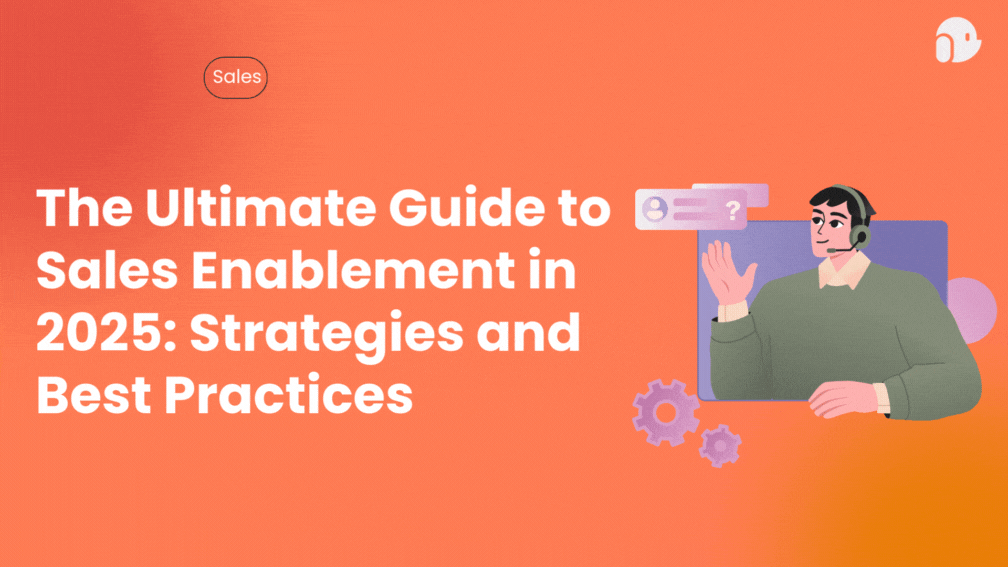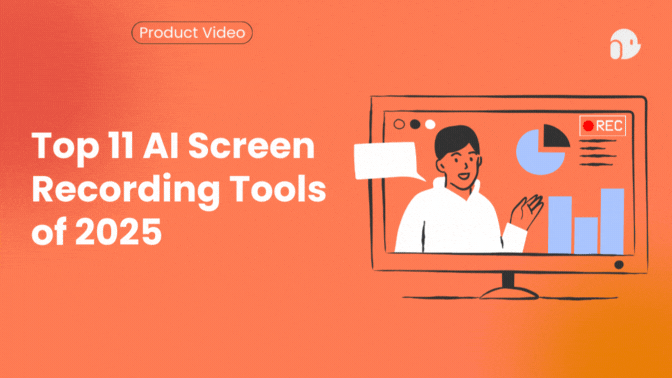The Ultimate Guide to Sales Enablement in 2025: Strategies and Best Practices

The world of B2B sales has changed more in the last three years than it did in the previous decade. Digital-first buyers now control most of the purchasing journey before ever speaking with a sales rep. Buying cycles are longer, more complex, and highly collaborative. In this new environment, traditional sales tactics are simply not enough, and that’s exactly why sales enablement has become a critical driver of revenue rather than just a support function.
What is Sales Enablement (and Why It Matters Today)
Sales enablement is the strategic and continuous process of equipping sales teams with the right content, training, tools, and insights they need to sell effectively and consistently. What used to be a “nice-to-have” training function has now evolved into a core part of revenue strategy. Successful organizations see it as an operating system for sales execution, aligning go-to-market teams, improving productivity, and ensuring every buyer interaction delivers value.
Key Strategic Pillars of Sales Enablement
An effective sales enablement strategy is built on four interconnected pillars:
• Training & Coaching – Comprehensive onboarding plus continuous skill development ensures reps are always prepared and confident in every conversation.
• Content Creation & Management – Relevant, high-quality content mapped to the buyer journey allows reps to deliver the right message at the right time.
• Technology Integration – CRMs, sales engagement tools, and enablement platforms simplify workflows and connect data across teams.
• Cross-Departmental Alignment – Tight collaboration between sales, marketing, and customer success ensures a unified revenue strategy and consistent customer experience.
These pillars reinforce each other, and missing even one can significantly reduce the impact of the others.
Trends Shaping Sales Enablement in 2025
2025 is bringing a fundamental shift in how sales enablement teams operate. Here are the key trends to watch:
Buyer Enablement – 80% of B2B interactions now happen in digital channels. Reps must focus on making it easier for buyers to self-educate with transparent content, ROI tools, and personalized demos.
To dive deeper into how personalized demo experiences support modern buyer expectations, take a look at our step-by-step guide on how to personalize your sales demos.
Revenue Enablement – Sales enablement is expanding to include marketing and customer success, aligning teams across the entire customer lifecycle to drive retention and renewals.
Renewals > New Business – In the current SaaS climate, customer retention is often more valuable (and predictable) than new deals. Enablement initiatives are increasingly focused on onboarding, expansion, and churn reduction.
Consolidated Tech Stacks – Instead of juggling dozens of tools, organizations are consolidating platforms to create a single source of truth and streamline workflows.
Pull-Based Enablement – Self-service access to AI-powered knowledge bases gives reps real-time access to what they need, exactly when they need it.

The Role of AI in Modern Sales Enablement
AI has quickly moved from “nice-to-have” to “must-have” across every enablement workflow. Its impact goes far beyond automation:
- Personalized Content at Scale – AI generates role- and industry-specific messaging, one-pagers, and proposals tailored to each buyer’s needs.
- Real-Time Coaching – AI analyzes live calls and provides immediate feedback on tone, objections, and competitive positioning.
- Predictive Analytics & Lead Scoring – AI enables reps to focus on the most promising opportunities by analyzing conversion likelihood, behavioral signals, and historical data.
If you want a detailed framework for identifying and prioritizing the right opportunities, check out our ultimate guide to lead qualification and identifying high-quality leads.
- Smart Content Recommendations – Reps no longer have to search endlessly for the right asset; AI surfaces it automatically based on deal stage and persona.
AI doesn’t replace the human element. Instead, it augments it, turning every rep into a “super seller” by amplifying their strengths and freeing up precious time.
Best Practices to Build a Future-Ready Enablement Strategy
To stay competitive in 2025 and beyond, organizations should focus on a few core best practices:
- Align All Customer-Facing Teams Around Shared KPIs
Establish unified goals and make performance data visible across sales, marketing, and customer success. - Centralize and Organize Content
Utilize a modern CMS or sales enablement platform to enable reps to access relevant content instantly during live customer conversations. - Leverage AI for Continuous Learning
Integrate AI-powered coaching, microlearning, and personalized learning paths to keep reps sharp and up-to-date. - Create Continuous Feedback Loops
Regularly collect input from sales teams and use data analytics to refine content, training, and processes.
Small improvements in these areas compound quickly and often turn into meaningful revenue gains throughout the year.
Conclusion
Sales enablement is no longer just a function; it’s a growth engine. Teams that embrace AI, align across departments, and prioritize buyer enablement will be best positioned to win in 2025 and beyond.
Want to level up your enablement strategy with AI-powered, personalized demo videos?
👉 Start your free trial at Puppydog.io
Frequently Asked Questions (FAQs)
Q1. What is the main goal of sales enablement?
The primary goal of sales enablement is to equip sales teams with the content, tools, skills, and insights they need to engage buyers effectively and drive consistent revenue growth.
Q2. How is sales enablement different in 2025 compared to a few years ago?
In 2025, sales enablement is far more data-driven and AI-powered. It no longer focuses on just training or content distribution; it now connects marketing, sales, and customer success across the entire customer lifecycle and prioritizes buyer enablement and revenue efficiency.
Q3. What role does AI play in modern sales enablement?
AI supports real-time coaching, predictive lead scoring, hyper-personalized content creation, and instant content recommendations. It enhances rep performance and helps organizations scale their best practices.
Q4. Which teams benefit from sales enablement?
Traditionally, it focused on sales teams, but modern enablement benefits marketing and customer success teams as well, making it a key driver of full revenue enablement across all customer-facing functions.
Q5. How can companies get started with sales enablement?
Start by aligning internal teams around shared KPIs, auditing existing content and processes, and implementing a scalable enablement platform. It’s also helpful to focus on quick-win use cases, like onboarding improvements or better demo content, to build momentum.

Sarah Thompson is a storyteller at heart and Business Developer at PuppyDog.io. She’s passionate about creating meaningful content that connects people with ideas, especially where technology and creativity meet.






